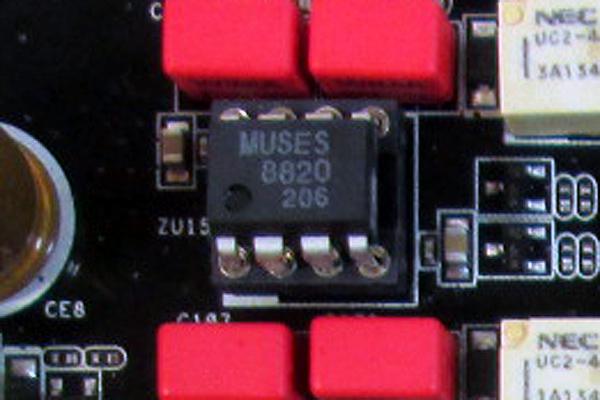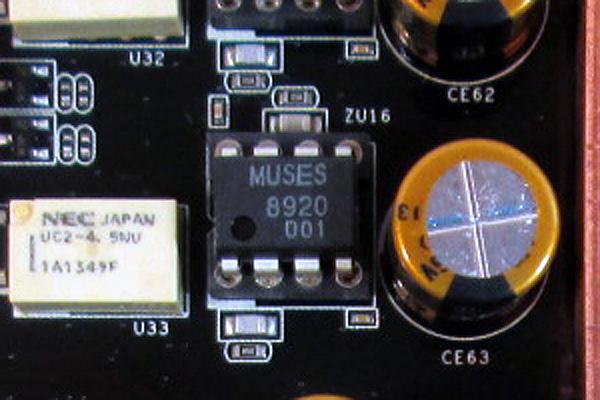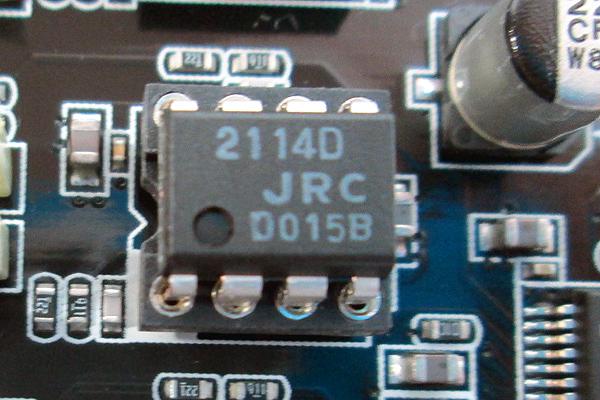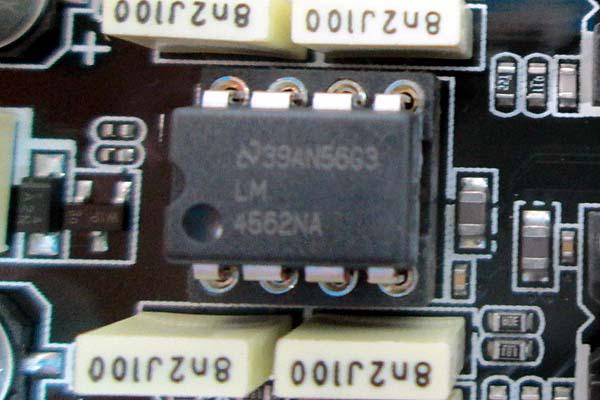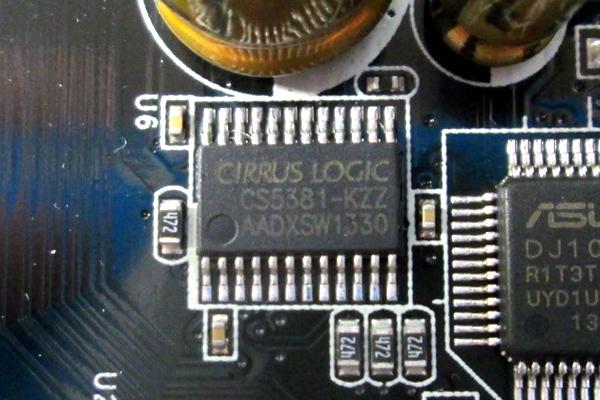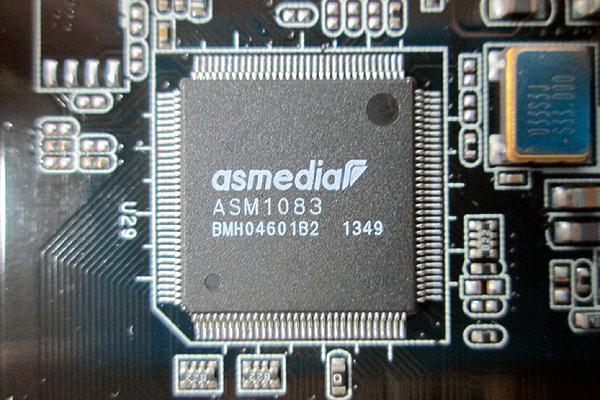Electronics Overview
Operational Amplifiers (Opamps)
These chips are used for signal conditioning such as LPF/Buffering and Current to Voltage Conversion.
The Essence STX II card, uses quite a few different opamp chips from the generic 5532 to the premium quality LM4562, LME49720 and Muses 8XXX series. We will break down the various opamps on each card and their specifications.
- Essence STXII Card
I/V Conversion: Muses 8820
The Muses 8820 has been seen in many external DAC designs from many different design houses and has been used in many of ASUS audio designs.
This is a Bi-Polar opamps, with a voltage gain of 110dB typ. An output noise rating of 4.5nV/√Hz and a slew rate of 5V/µs typ. The chip further has a THD% of 0.001 typ@1Khz and Channel separation of 140 dB. These are high end specifications and this opamp is far from generic and is a high grade opamp suitable for professional circuitry designs. Bi-Polar opamps are generally chosen for current to voltage circuit segments. ASUS included a second 8820 opamp in the swap kit.
Muses 8820 Speciation Sheet “http://www.njr.com/semicon/PDF/MUSES8820_E.pdf”
Buffer: Muses 8920
The Muses8920 Opamp is a J-fet type circuit. Offering a Voltage Gain of 135dB, low noise of 8nV/√Hz typ, very low distortion rating of THD%: 0.00004% Typ@1kHz, a Slew rate of 5V/μs typ and a Channel separation of 150dB typ.
This chip has excellent specifications and we can easily understand why ASUS utilized it for the final stage of the output circuit as these are premium grade audio chips and they ensure a clean, clear output signal ready for your amplifier or receiver.
Muses 8920 Specification Sheet “http://www.njr.com/semicon/PDF/MUSES8920_E.pdf”
- Daughter Card
I/V: NJM 2114D
Many electronic hobbyists consider the 2114D a more upgraded version of the 5532 opamp which has probably been used to record and master more music than any other chip there is! The 2114D has a slew rate of 15V/μs typ, low noise of 0.9μVrms typ and a THD% of 0.0005. It is a more generic chip but is acceptable for the function and price point.
Buffer: LM4562NA
The Expansion card uses 3 of these chips as buffers for each stereo pair output.
The LM4562NA is a high grade chip, used in many designs for soundcards and DAC’s seen in the market place in the last few years. This chip has impressive specifications, with a fast Slew Rate: ± 20V/μs (typ), and a very low THD+N: 0.00003%. An impressive chip and one of the favorites in the G3D Audio lab especially in the TO-99 metal can package.
LM4562 Specification Sheet “http://www.ti.com.cn/cn/lit/ds/symlink/lm4562.pdf”
Note: The LM4562 and the LME49720 that is found in the opamp swap kit are the same opamp. The only difference between the two chips is the label.
Analog to Digital Converter (ADC)
- Cirrus Logic CS 5381
This Cirrus Logic chip provides conversion duties for your analog inputs: Mic_In and Line_In.
The component is a 24/192kz part with a dynamic range of 120dB and a THD+N rating of 110dB.
This chip is a great choice considering price to performance giving the end user a quality analog input.
CS5381 Specification Sheet “http://www.cirrus.com/en/pubs/proDatasheet/CS5381_F2.pdf”
Chipset – AV100
The AV series seen on ASUS audio products are rebranded chips from another manufacturer. Many soundcard experts suggest the AV100 chipset is a rebranded CMI8787 Chipset. Every audio task performed by this card is done through software with the chipset act as a sort of signal router and providing some Sample Rate Conversion (SRC).
Bridging chip
This chip is used as a bridge to interface the AV100 chipset to the PCI-E bus. There is really not much to say about the chip but it is found on the PCB so we thought it deserved a mention. Other ASUS audio designs have used bridges in the past also.

